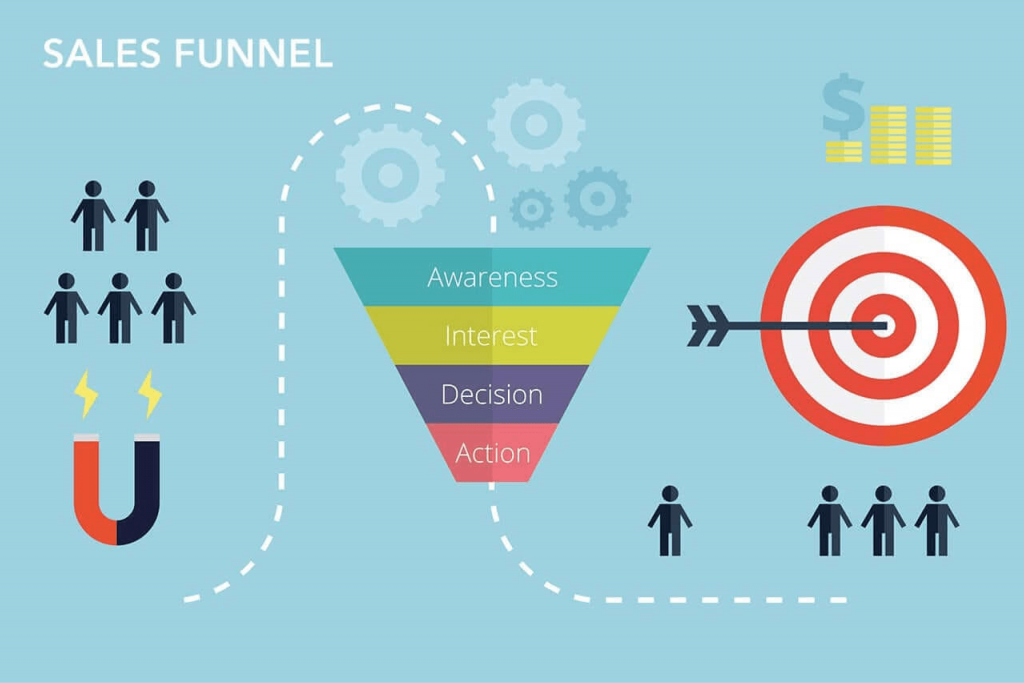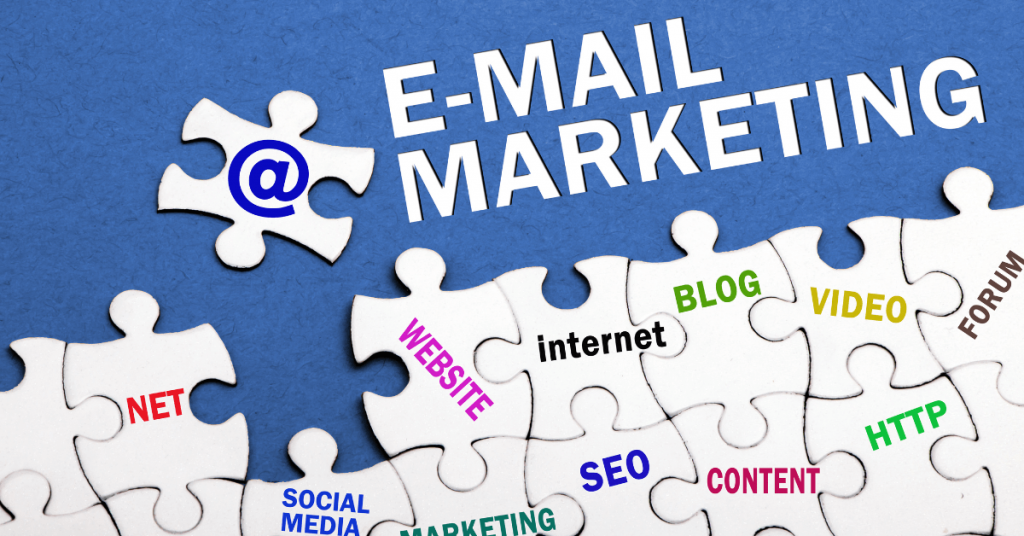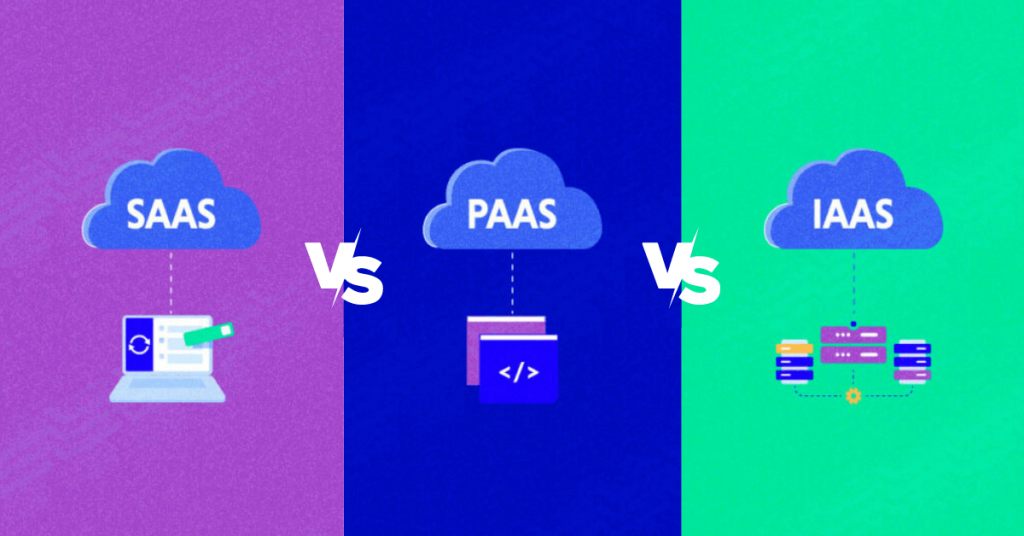In the bustling realm of B2B software-as-a-service (SaaS) enterprises, the path from potential lead to loyal customer isn’t a straight shot. This is where the B2B SaaS sales funnel comes into play – a strategic blueprint meticulously designed to usher prospects through a series of distinct stages, culminating in their transformation into steadfast advocates. Regardless of whether you’re a seasoned veteran or a newcomer, comprehending and constructing an effective sales funnel is the linchpin for driving revenue and cultivating customer growth.
What Is The B2B SaaS Sales Funnel?
A B2B (Business-to-Business) SaaS (Software as a Service) sales funnel refers to the systematic process that B2B SaaS companies use to guide potential customers through various stages of the buying journey, ultimately leading them to become paying customers. The sales funnel is a conceptual model that illustrates the steps a prospect takes from awareness of the product to making a purchase decision.
Here are the typical stages in a B2B SaaS sales funnel:
1. Awareness Stage
At the outset of this journey, the goal is to ignite awareness within your target audience. During this stage, prospects may not even be fully cognizant of their pain points, let alone the solution you offer. Your primary objective is to capture their attention and position your brand as a valuable resource. This can be achieved by deploying a combination of the following strategies:
- Content Marketing: Embark on a journey of crafting illuminating blog posts, immersive eBooks, and captivating infographics that spotlight prevailing industry trends and challenges. By sharing insights and perspectives, you establish yourself as an authoritative source.
- Social Media: Harness the power of social platforms where your audience congregates. Delve into content that not only educates but also sparks a sense of curiosity, enticing them to explore further.
- Influencer Partnerships: Forge partnerships with influencers in your industry. By collaborating with figures who hold sway in your domain, you can amplify your reach and tap into their existing follower base.
2. Interest and Consideration Stage
As prospects transition from mere awareness to a genuine interest in your solution, the onus shifts to providing them with valuable information. This information should position your SaaS solution as a potent remedy for their pain points. During this phase, nurturing your leads becomes paramount, and this can be achieved through:
- Webinars and Online Events: Host webinars and virtual events that provide a platform to showcase your expertise and illuminate the benefits of your SaaS solution. This interactive approach, therefore, creates an avenue for prospects to engage directly with you.
- Whitepapers and Case Studies: Offer deep-dive resources like whitepapers and case studies that delve into specific pain points. By illustrating how your SaaS addresses these pain points, you solidify your value proposition.
- Email Drip Campaigns: Utilize the power of automation to orchestrate email sequences that deliver valuable content directly to your prospects’ inboxes. This consistent engagement, therefore, keeps your brand at the forefront of their minds.
3. Evaluation Stage
Now in the evaluation phase, prospects are actively considering multiple solutions, including yours. The challenge here is to address their specific pain points while highlighting how your SaaS is the ideal fit. This stage involves nurturing leads through:
- Personalized Product Demos: Offer tailored product demonstrations that spotlight how your solution directly caters to their pain points. This level of personalization is an effective way to show them what they stand to gain.
- Free Trials and Limited-Time Offers: Extend an invitation for prospects to experience your SaaS firsthand through free trials or time-bound offers. This allows them to experience the value you bring within a defined timeframe.
- Customer Testimonials and Reviews: Leverage the voices of existing customers through testimonials and reviews. This serves as social proof of your SaaS’s effectiveness and resonates strongly with prospects.
4. Decision Stage
The decision stage marks the culmination of the funnel, where leads transform into paying customers. The objective here is to ensure a seamless and compelling conversion process. To achieve this, employ strategies such as:
- Customized Pricing Plans: Recognize the diversity of your prospects’ needs and tailor pricing options accordingly. This demonstrates a keen understanding of their unique requirements.
- One-on-One Consultations: Offer personalized consultations that address any lingering queries or concerns prospects may have. These consultations provide a final touchpoint before sealing the deal.
- Implementation Support: Provide guidance and support during the onboarding process. This meticulous approach to assisting customers as they embark on their journey with your SaaS bolsters their confidence.
5. Post-Purchase Stage
The journey doesn’t reach its culmination with the purchase – in fact, it’s just the beginning. This phase is crucial for customer retention and advocacy. To foster a robust and enduring customer relationship, focus on:
- Onboarding and Training: Extend comprehensive onboarding sessions that empower customers to harness the full potential of your SaaS. This ensures a smooth transition from acquisition to utilization.
- Regular Updates and Feature Releases: Keep customers engaged by consistently delivering new features and updates.
This not only sustains their interest but also demonstrates your commitment to their success. - Exclusive Customer Community: Provide a platform where customers can interact, share insights, and offer feedback. This sense of belonging fosters a community that is deeply connected to your brand.
The B2B SaaS sales funnel is not always a linear process; moreover, prospects can move back and forth between stages. In addition, it is crucial to understand your target audience, their pain points, and their buying behavior to tailor your approach at each stage and increase the likelihood of converting leads into loyal customers.

How To Build A B2B SaaS Sales Funnel?
Building a B2B SaaS sales funnel involves a strategic and systematic approach to guide potential customers from awareness to conversion. Here’s a step-by-step guide to help you build an effective B2B SaaS sales funnel:
1. Identify Your Target Audience
Constructing an effective sales funnel commences with a deep understanding of your ideal customer profile. Rigorous market research is the linchpin here – it’s essential to identify their pain points, challenges, and preferences.
By mining data on their behaviors, demographics, and purchasing patterns, consequently, you’re better equipped to tailor your funnel to resonate with their needs.
2. Map Out the Customer Journey
Visualizing the distinct stages of the customer journey, from initial awareness to post-purchase engagement, is pivotal. A seamless transition between these stages is imperative, ensuring that the entire experience feels cohesive and engaging. Further, align your content and strategies to guide prospects organically through each step.
3. Create Compelling Content
Content is the cornerstone of any successful sales funnel. At each stage, your content should be curated to address specific pain points, offer actionable solutions, and vividly demonstrate the value of your SaaS. Consistency in messaging, coupled with the delivery of information that informs and empowers, is key.
4. Implement Marketing Automation
Enter the realm of marketing automation tools. These platforms streamline your efforts, enabling you to establish personalized communication and timely follow-ups. Whether you opt for HubSpot, Marketo, or Pardot, the benefits are significant – automated email sequences, lead nurturing, and meticulous tracking of customer interactions.
5. Personalize Outreach and Engagement
The hallmark of effective communication in the B2B SaaS realm is personalization. Craft communications, be they emails or messages, that cater precisely to the unique needs and preferences of your prospects and customers. Incorporate insights from their prior interactions to elevate the relevance of your outreach.
6. Monitor, Analyze, and Optimize
Constant vigilance over your funnel’s performance is imperative. Key metrics like conversion rates, engagement levels, and customer feedback serve as your compass. Regular analysis reveals bottlenecks and areas ripe for enhancement. Embrace the iterative nature of optimization, allowing your funnel to evolve and enhance its efficiency.
Remember that building a B2B SaaS sales funnel is an iterative process. Regularly analyze the performance of each stage, gather feedback from your teams and customers, and make necessary adjustments to optimize your funnel for better conversion rates and customer satisfaction.
Why is a Sales Funnel Important for SaaS Companies?
A sales funnel is a crucial concept for SaaS (Software as a Service) companies due to its ability to systematically guide potential customers through the entire buying process, from awareness to conversion. Here’s why a sales funnel is important for SaaS companies:
1. Structured Approach to Sales:
A sales funnel provides a structured framework that outlines the various stages of the customer journey, from the initial awareness of your SaaS product to the final conversion. This structured approach helps your sales and marketing teams understand where prospects are in the buying process and tailor their strategies accordingly.
2. Efficient Lead Management:
The sales funnel allows you to categorize leads based on their level of engagement and interest. This segmentation enables your team to allocate resources effectively, focusing more attention on leads that are closer to making a purchasing decision.
3. Customized Messaging:
At each stage of the funnel, prospects have different needs and concerns. By understanding where a prospect stands in the funnel, you can create targeted and relevant messaging that addresses their specific pain points and objections. This increases the likelihood of capturing their interest and moving them to the next stage.
4. Higher Conversion Rates:
With a sales funnel, you can optimize each stage for better conversion rates. By analyzing the funnel’s performance, you can identify bottlenecks and areas for improvement. This leads to a more streamlined and efficient process, resulting in higher conversion rates from leads to paying customers.
5. Data-Driven Decision Making:
A sales funnel provides valuable data on how prospects move through the various stages. This data can help you identify trends, track conversion rates, and pinpoint areas that require attention. Data-driven insights allow you to make informed decisions about your sales and marketing strategies.
6. Improved Customer Experience:
A well-designed sales funnel ensures that prospects receive relevant information at the right time. This personalized approach enhances the customer experience and builds trust, as prospects feel that their needs are being understood and met.
7. Long-Term Relationship Building:
The sales funnel doesn’t end at conversion. After a prospect becomes a customer, you can continue nurturing the relationship and upselling or cross-selling additional products or features. This can lead to increased customer loyalty and lifetime value.
8. Effective Resource Allocation:
SaaS companies often have limited resources, and it’s important to allocate them efficiently. A sales funnel allows you to focus your efforts and resources on the strategies and channels that are most effective at each stage of the funnel.
9. Predictable Revenue Generation:
A well-defined sales funnel helps create a more predictable revenue stream. By understanding the conversion rates at each stage, you can estimate how many leads you need to generate in order to achieve your revenue targets.
In essence, a sales funnel provides SaaS companies with a strategic framework to guide potential customers through the buying journey while optimizing processes, improving conversion rates, and enhancing the overall customer experience. It’s a fundamental tool for driving growth and success in the competitive SaaS industry.
What Are The B2B SaaS Sales Funnel Metrics?
SaaS sales funnels involve various stages and interactions, each of which can be measured using specific metrics. Here are some key SaaS sales funnel metrics:
- LTT – Lead to Trial Conversion: This metric calculates the percentage of leads that convert into trial users. It measures the effectiveness of your lead nurturing efforts in convincing potential customers to take the next step and try out your SaaS product.
- DCR – Demo Conversion Ratio: The Demo Conversion Ratio represents the percentage of product demos that result in a prospect becoming a trial user or paying customer. It indicates how successful your product demonstrations are in convincing leads to engage further with your SaaS solution.
- TTS – Trial to Sale Conversion: Trial to Sale Conversion measures the percentage of trial users who become paying customers. It reflects the effectiveness of your product’s trial experience and the value it provides in driving conversions.
- LTV – Customer Lifetime Value: Customer Lifetime Value represents the total revenue a customer generates over their entire engagement with your SaaS product. It includes all subscription payments and additional purchases made during their tenure as a customer.
- Churn: Churn is the rate at which customers cancel or stop using your SaaS product within a specific time period. It’s typically expressed as a percentage and indicates customer retention and satisfaction levels.
- MRR – Monthly Recurring Revenue: Monthly Recurring Revenue measures the total revenue generated from all of your subscription-based customers on a monthly basis. It’s a key indicator of your SaaS company’s stability and growth.
- ARR – Annual Recurring Revenue: Annual Recurring Revenue is similar to MRR but measures the total revenue generated from subscriptions on an annual basis. It’s often used for financial planning and forecasting.
- Sales Cycle: The B2B SaaS Sales Cycle is the average time it takes for a lead to move through the entire sales funnel, from initial contact to becoming a customer. It’s an essential metric for understanding the efficiency of your sales process.
- CAC – Customer Acquisition Cost: Customer Acquisition Cost calculates the total cost incurred to acquire a new customer. It includes expenses related to marketing, sales efforts, and any other resources dedicated to acquiring customers.
These top SaaS metrics collectively provide insights into different stages of your SaaS sales funnel, from lead generation to customer retention. By monitoring and analyzing these metrics, you can make informed decisions to optimize your sales funnel strategy and improve overall business performance.
Conclusion – B2B SaaS Sales Funnel
In the multifaceted world of B2B SaaS, a well-orchestrated sales funnel stands as your guiding star. From igniting brand awareness to nurturing post-purchase loyalty, each stage bears immense significance in your journey toward triumph. Armed with a profound understanding of the intricacies of the B2B SaaS sales funnel and armed with the strategies outlined in this discourse, you are poised to create a robust

